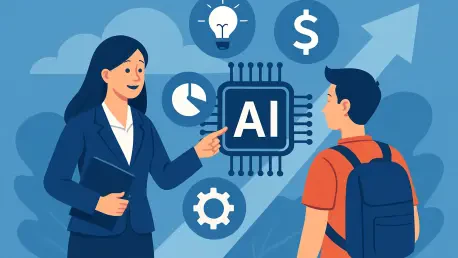As we dive into the evolving world of employee benefits and HR technology, I’m thrilled to speak with Sofia Khaira, a renowned specialist in diversity, equity, and inclusion, who brings a unique perspective to talent management and development. Sofia’s expertise extends to fostering inclusive workplaces, and today, she’ll share insights on a groundbreaking partnership in the benefits space that’s transforming how employees engage with their health and wealth options. We’ll explore how AI-driven solutions are simplifying complex decisions, enhancing employee confidence, and delivering value to both workers and employers, while also looking at what the future holds for such innovations in HR tech.
Can you walk us through the core purpose of integrating AI-driven benefits guidance into HR platforms, and why it’s such a game-changer for employees?
Absolutely. The heart of this kind of integration is about making benefits selection less of a headache and more of an empowering process. Employees often feel lost when faced with numerous options and technical jargon. By embedding AI-driven guidance into HR platforms, we’re able to offer personalized recommendations that cut through the noise, helping individuals pick plans that truly fit their needs. It’s a game-changer because it shifts the experience from guesswork to confidence, ensuring people feel supported at critical decision points.
What are some of the biggest hurdles employees face when navigating benefits, and how does technology help overcome them?
One of the biggest hurdles is simply understanding what’s available—benefits packages can be incredibly complex, with different costs, coverages, and fine print. Many employees also worry about making the wrong choice, which adds stress. Technology, particularly AI, helps by analyzing personal data like health needs or financial goals to suggest the best options. It breaks down complicated terms into plain language and offers a step-by-step guide, so employees feel less overwhelmed and more in control.
How does a more connected benefits ecosystem change the day-to-day experience for employees interacting with their plans?
A connected benefits ecosystem means that all the pieces—health, wealth, well-being—are linked in a way that’s easy to access and understand. Practically, it’s about having a single place where employees can see their options, get tailored advice, and even track how their choices impact their overall life. Day-to-day, this translates to less time spent figuring things out and more time feeling secure, knowing their benefits are working for them in a holistic way.
Can you share some specific impacts that AI-driven benefits tools have had on employees, especially in terms of balancing cost and coverage?
Certainly. We’ve seen impressive results, like 72% of employees reporting they’ve struck the right balance between cost and coverage after using AI tools. What this means is that people are no longer overpaying for plans they don’t need or underinsuring themselves out of fear of high premiums. They’re making informed choices that protect their health and their wallet, which reduces financial stress and boosts peace of mind.
How does increased confidence in benefits selection affect employees’ overall well-being?
When employees feel confident—say, 75% of them as recent data shows—it’s a huge win for their well-being. Choosing benefits isn’t just a once-a-year task; it’s tied to how secure they feel about their future. Confidence means less anxiety over whether they’ve got the right coverage for a medical emergency or retirement. It frees up mental space, letting them focus on their work and personal lives, knowing they’ve made solid decisions.
From an employer’s perspective, what kind of value comes from offering AI-powered benefits guidance to their workforce?
Employers see tremendous value in this. First, it drives engagement—when employees understand and value their benefits, they’re more likely to use them effectively. This can lead to better health outcomes and higher job satisfaction. Second, it’s a retention tool; a workforce that feels cared for sticks around. Finally, there’s a measurable return on investment as participation in benefits programs rises, maximizing the impact of what employers spend on these offerings.
What elements of benefits selection do employees often find most overwhelming, and how does technology address those specific pain points?
Employees often get bogged down by the sheer volume of choices and the fear of hidden costs or gaps in coverage. Comparing plans side-by-side can feel like decoding a puzzle. Technology tackles this by personalizing the experience—AI narrows down options to what’s most relevant and flags potential issues like high out-of-pocket costs. It also provides clear explanations and simulations, so employees can see how a plan might play out in real life before committing.
Looking ahead, how do you envision the role of AI in benefits solutions evolving over the next few years?
I think we’re just scratching the surface. In the coming years, AI will likely become even more predictive, anticipating life changes—like starting a family or nearing retirement—and proactively suggesting adjustments to benefits. We’ll also see deeper integration across platforms, connecting benefits with other HR tools for a seamless employee experience. The focus will be on hyper-personalization, ensuring every interaction feels tailored, while also addressing broader workforce trends like remote work or gig economy needs.
What’s your forecast for the future of employee benefits technology, especially in terms of accessibility and impact on workplace culture?
My forecast is optimistic. I believe benefits technology will become even more accessible, with intuitive interfaces and mobile-first designs reaching every employee, regardless of tech-savviness. The impact on workplace culture could be profound—when employees feel their benefits are personalized and easy to manage, it builds trust and loyalty. Companies that prioritize this tech will likely see stronger cultures, where employees feel valued not just for their work, but for their whole selves. It’s about creating environments where well-being is a shared priority.









